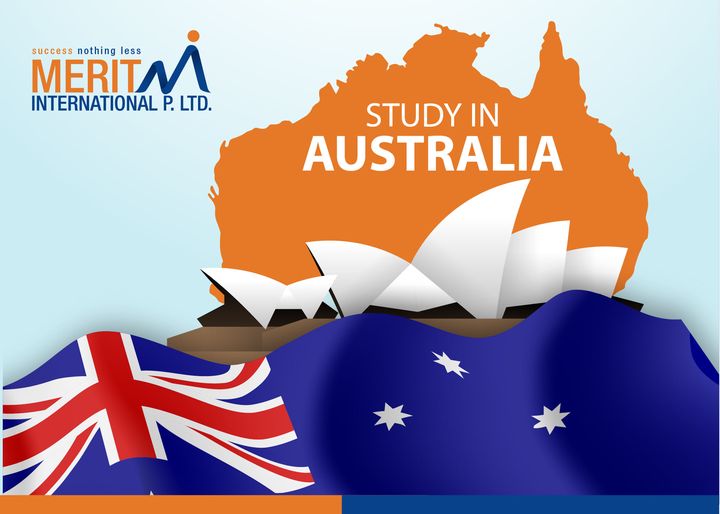Australia

Australia, officially named as Commonwealth of Australia, is one of the most happening places in the world for one to study and live. In context of size, it is the sixth largest country in the world. Australia holds a position of pride as one of the most developed nations of the world. It is also one of the wealthiest countries and possesses an impressive continuous economic prosperity among all the countries in the world. Furthermore, in accordance to Prosperity Index, Australia is the fourth happiest country in the world along with 5 of the 30 best cities in the world for students (Top University Rankings 2015). Accordingly, we firmly believe you are sure to enjoy your time here!
Australia’s spectacular natural beauty, with the gorgeous beaches and stunning landscapes make every day feel like a holiday. Whether you are a student, a skilled professional, or a business person looking for attractive investments and expansion opportunities, Australia welcomes you.
Some important facts and figures about Australia:
- It is located in the Southern Hemisphere between the Indian and Pacific ocean
- It covers an area of nearly 7.7 million square kilometres
- It is the 6th largest country in the world
- It is the only nation to govern an entire continent
- It is officially called the Commonwealth of Australia
- It’s current population is approximately 23 million
- It has the capital city Canberra located in The Australian Capital Territory, with a population of approximately 379,000
- The largest city in Australia is ‘Sydney’ located in the state of New South Wales with a population of approximately 4.8 million
- It is famous for landmark buildings including the Sydney Opera House, and the Sydney Harbour Bridge.
Study Options / Fields of Education
Courses in Australia are categorised into ‘Fields of education’ which are also known as ‘Fields of study’. Some of the broad categories to choose from are provided below:
- Natural and physical sciences
- Information technology
- Engineering and related technologies
- Architecture and building
- Agriculture, environmental and related studies
- Health
- Education
- Management and commerce
- Society and culture
- Creative arts
- Food, hospitality and personal services
- Mixed field programme
Post Study options available in Australia
After completion of you degree, you will have numerous options available associated with whether to stay in Australia or return to home and provide service to your country. You can further carry on your studies in Australia at higher level or choose another field of study; you may also be eligible for different visa options such as:
- Graduate Work Visas – Visa Subclass 485
- Post-Study Work Stream
- Graduate Work Stream
- Training and Research Visa (SC 402)
Occupational Trainee, Professional Development, Research Streams
- General Skilled Migration – Visa Subclass 189,190 or 489
- Employer Sponsored – Visa Subclass 457,186 or 187
- Partner Migration – Visa Subclass 820 and 801
Australian Qualification Framework
The Australian Qualifications Framework (AQF) regulates all Australian qualifications and officially defines the level of education that each qualification title represents. Each qualification generally leads into the next qualification (see below) in the education framework.
Having a nationally standardised system makes it easier for students to pursue their education, as there is a clear pathway to follow. It also makes transferring between different states and territories or universities much easier, as there is no confusion caused by differing qualification titles and education levels.
The AQF is made up of ten levels:
|
AQF level |
Qualification type |
|
Level 1 |
Certificate I |
|
Level 2 |
Certificate II |
|
Level 3 |
Certificate III |
|
Level 4 |
Certificate IV |
|
Level 5 |
Diploma |
|
Level 6 |
Advanced diploma Associate degree |
|
Level 7 |
Bachelor degree |
|
Level 8 |
Bachelor honours degree Vocational graduate certificate Vocational graduate diploma Graduate certificate Graduate diploma |
|
Level 9 |
Masters degree (research) Masters degree (coursework) Masters degree (extended) |
|
Level 10 |
Doctoral degree Higher doctoral degree |
The AQF by sector
The AQF includes qualifications in three main education sectors (the schools sector, the Vocational Education and Training (VET) sector and the higher education sector) within a single framework and provides guidelines about the links between them.
The accredited qualifications are shown below, grouped according to the sector in which they are most commonly issued.
|
Schools sector |
VET sector |
Higher education sector |
|
Senior Secondary Certificate of Education Note: VET is increasingly offered in the schools sector |
Certificate I |
Bachelor degree |
Note that the higher education sector is broken into undergraduate and postgraduate qualifications. Undergraduate qualifications consist of bachelor degrees (and subsequent bachelor honours degrees) and provide initial education for entry into professional careers. Postgraduate qualifications consist of graduate certificates, graduate diplomas, masters degrees and doctoral degrees. These programs provide further advanced-level professional study that enables students to extend their knowledge, enter a new field or complete research.